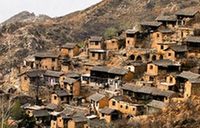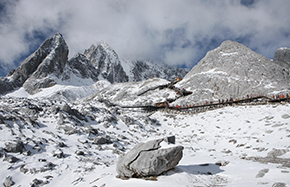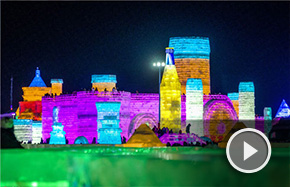Exploring Dalian
 |
|
Tram cars have been running in Dalian for more than 100 years. [Photo by Zhou Ke/for China Daily] |
A century-old tram gives Zhu Chengpei and Zhang Xiaomin a chance to hop on and hop off, exploring interesting aspects of a city rich in Russian traditions.
Trams have been trundling down the streets of Dalian since 1909, and 16 carriages manufactured in the 1930s are still serving what is now "Bus No 201". Changes in the port city with Russian roots have been witnessed by passengers for a century, and recently we got on a tram car to trace the history and find the modern charm of this northeastern coastal city in Liaoning province.
Dongguan Street
Our journey began on Dongguan Street near the Qingniwa Bridge, the city's commercial center. It is a block covering about half a square kilometer with most houses built in the 1920s and 1930s.
A woman carrying a baby in her arms was sitting in front of a gate enjoying the sunshine. She told us that few local residents live there today, because of the old and rundown facilities. Instead, they are rented to migrant workers. A two-story house often accommodates at least 10 families, sharing one gate and a courtyard.
We entered a gate and went to the second floor up the narrow stairs.
It was quiet and a little shabby, but still rich with the flavor of life: flowerpots on window ledges, clothes hanging on ropes over doors, trash piled in corridors.
Seen from the courtyard, the nearby skyscrapers seemed to be in a different time and place.
As one of the most dynamic cities in China, Dalian has enjoyed rapid economic development. Many old houses were demolished and replaced by new ones. Space in a neighboring building sells for an average of 26,000 yuan ($4,302) per square meter. It is a kind of miracle that these old houses remains strong.
The Czar of Russia "rented" Lyuda (the area of today's Dalian city and its Lyushunkou district) from the government of the Qing Dynasty (1644-1911) in 1898. The Russians headquartered themselves in Lyushun, known as Port Arthur at that time. The next year, V.V. Sakharov was assigned to build a city named Dalny, meaning "remote" in Russian, which is today's Dalian.
He divided the city into three parts: one administrative, one commercial, and one Chinese.
When the Japanese took over the city in 1905 after winning the Russo-Japanese War (1904-1905), they changed its name to Dalian based on the pronunciation. Although the construction plan was adjusted several times during their occupation, which lasted until 1945, the third area we visited had been always for Chinese residents.
Local artists, writers, and volunteers have been appealing to protect this area as a vault of the city's early memories. They hope it can become a place like the 798 art zone in Beijing, and Tianzifang in Shanghai, that accommodates arts and heritage.






















